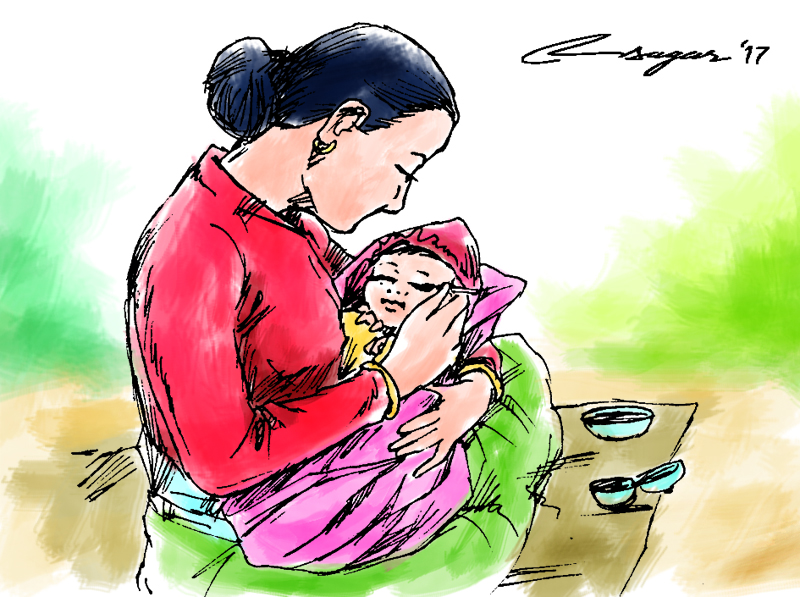Eye health and misconceptions: Change is possible but slow
Use of TOMs reflects the diverse eye health care needs of the population not met by the existing eye care delivery system. Consequently, to effectively rein in the tendency to use TOMs, there is a need to understand the health behavior
All people, whatever their status, whoever they are somehow are found to practice traditional treatment approach to diseases, not to mention the eye.
However, the severity of the practice differs in many ways, according to age, educational level, gender, socio-economical background, occupation, ownership of health insurance, rural location of residence etc.
The routes of administration of the Traditional Ocular Medications (TOMs) are mainly topical, oral, face-wash, fume-bath, shower and inhalation. When we explore the whys of the traditional ocular medications being still prevalent in societies, we come across different answers.
If the given area is rural then one may find difficulty in accessing the modern eye care facility, so they are bound to have TOMs. By occupation, people who are farmers and unemployed tend to excessively practice TOMs. It may be because the
farmers are almost always in the farming or jungle areas so that they can cherry-pick the medicines easily and seek counseling from traditional healers as well. The unemployed people might not be able to afford expensive modern medical therapy, so they are unable to do so.
If the use of TOMs has not been substantially reasonable, then there must be some unidentified underlying factors promoting the use of TOMs. Secondarily, with the increasing literacy rate worldwide, one may ask how such beliefs and practices prevail.
Alternatively, the resort to patronage of TOMs has been variously attributed to ignorance, barriers to access primary eye care services, preference, failure of conventional treatment, desire to take control over medical treatment, communication gap between patients and orthodox eye care providers and influence of friends and relatives.
TOMs are a form of biologically-based therapies or practices that are instilled or applied to the eye or administered orally to achieve a desired ocular therapeutic effect. TOMs are crude or partially processed organic (plant and animal products) or in-organic (chemical substances) agents or remedies that are procured from either a traditional medicine practitioner-TMP or a non-traditional medicine practitioners.
The use of TOMs, either as the sole first line treatment, or as adjunct used concurrently with conventional therapy has been associated with poor visual, ocular, and occasionally survival outcome of the otherwise treatable eye diseases in clinical ophthalmic practice.
TOMs-related poor ophthalmic treatment outcomes have been attributed to delay in the uptake of eye care services. The lack of standardization of dosage, low purity level, and non-physiologic physico-chemical properties of TOMs, and its unintended role as a culture medium for pathogens account for the observed adverse effects.
Some common beliefs of Nepalese people over the eye conditions and its traditional treatment modalities persist. Most often all the children are applied with gajal or kajal (combination of soot or oil) soon after they are born.
Gajals are supposed to strengthen the eyesight and cure red eyes. Some of them are preserved with the antibiotic ointments, usually chloramphenical found in the aplicaps. There is no convincing scientific truth as to whether it is of any help to the eye from its application other than the cosmetic enhancement.
Since the ointment also remains outside the closed vial/pack for over months, its efficacy for the control of infection is again in question. In some regions Laal Gedi (Ipomoca gnomoclita) is inserted into the conjunctival cul-de-sac for cleaning or removing foreign bodies.
When one cannot take out the laal gedi from the fornix then there would be formation of a foreign body granuloma, disregarding the micro-trauma it may cause. Some use mothers’ milk in the babies’ eye when there are some apparent problems like redness. Although the actual outcome is not completely understood one should be aware of practicing it after adequately cleaning the breasts.
There are also extant practices of putting various herbal drops and gulaab paani (preparation from the rose petals and water) into the eye, as the composition and purity differ with each preparation and possible contamination renders this practice unreliable.
Use of TOMs reflects the diverse eye health care needs of the population not met by the existing eye care delivery system. Consequently, to effectively rein in the tendency to use TOMs, there is a need to understand the health behavior, health literacy status, socio-economic variables, and dimensions of barrier to access eye care in the population.
The use of TOMs has persisted for eons and it is difficult to eradicate it at once. It is something that has become a part of the society for a long time. The rather progressive approach to eliminate it might be first to upgrade the quality and service delivery system of TOMs providing training to the practitioners, educating and counseling them.
Gradually, collaboration between them and governmental health posts or sub-health posts to encourage the practice of modern service would be helpful.
When the traditional practitioners start practicing modern and reliable medicines then they themselves counsel the society about its better and quicker advantages. Change is always possible, hence we should wait some more time to see the effects.
The author is an optometrist at Reiyukai Eye Hospital, Banepa






